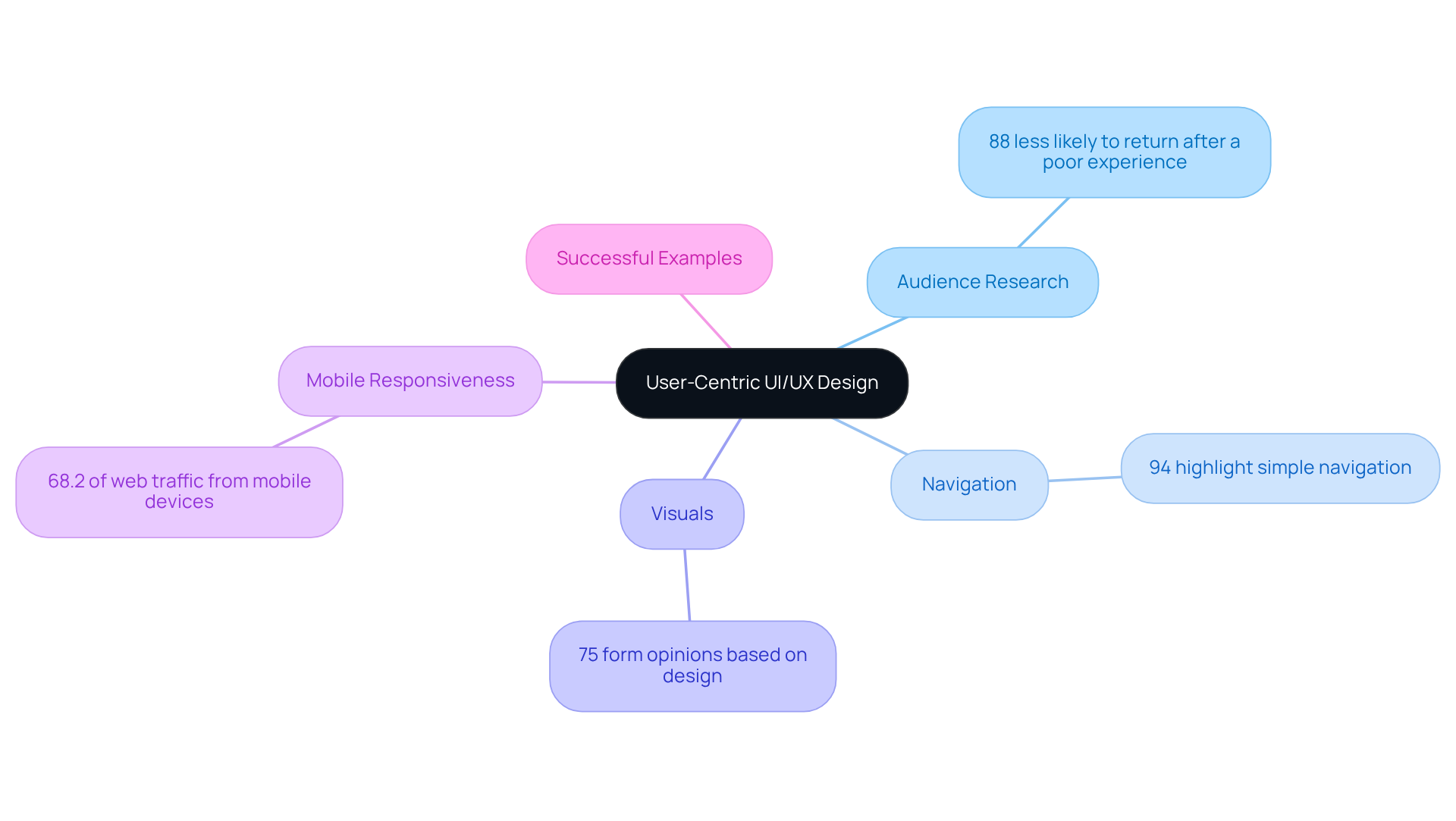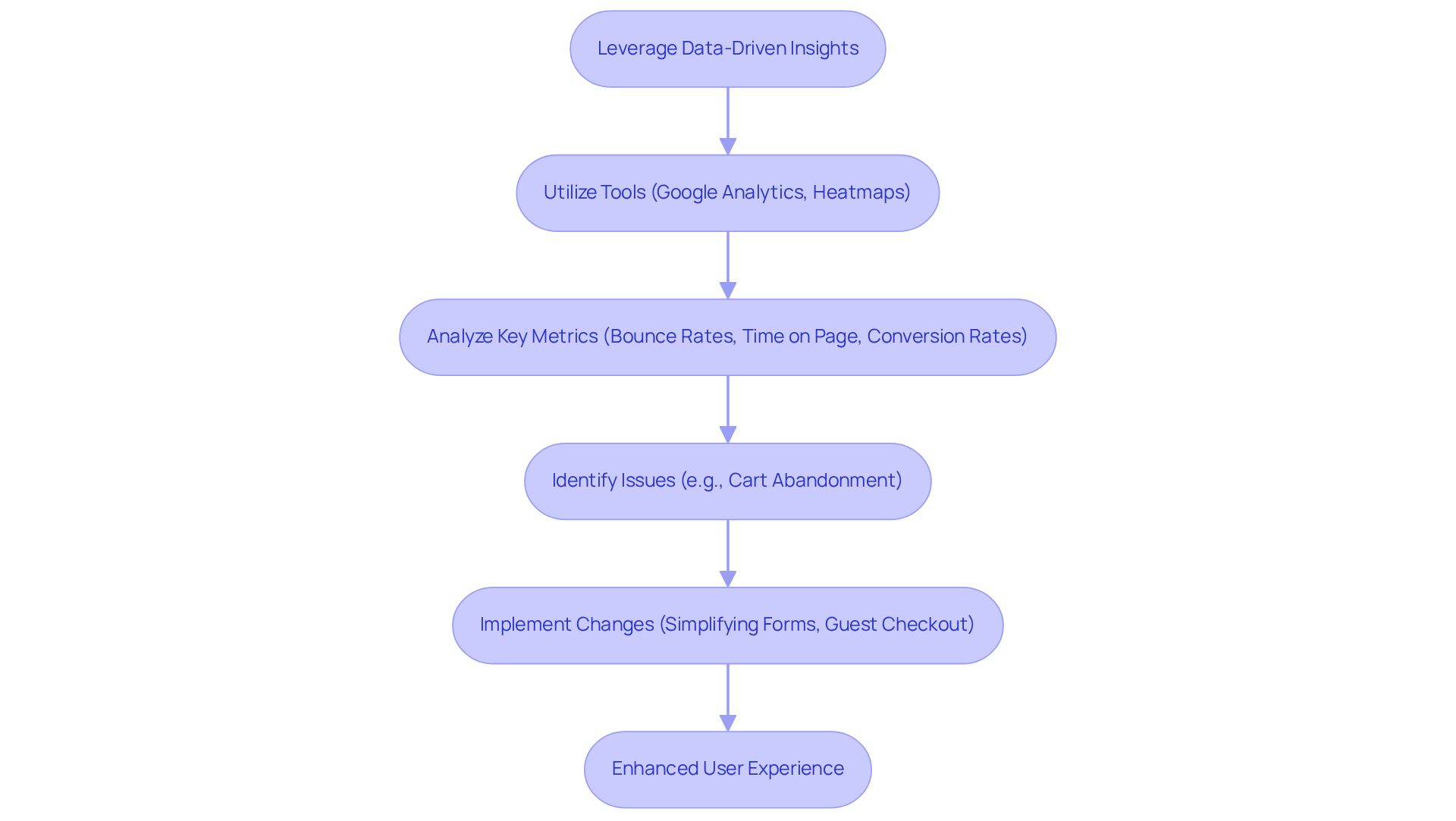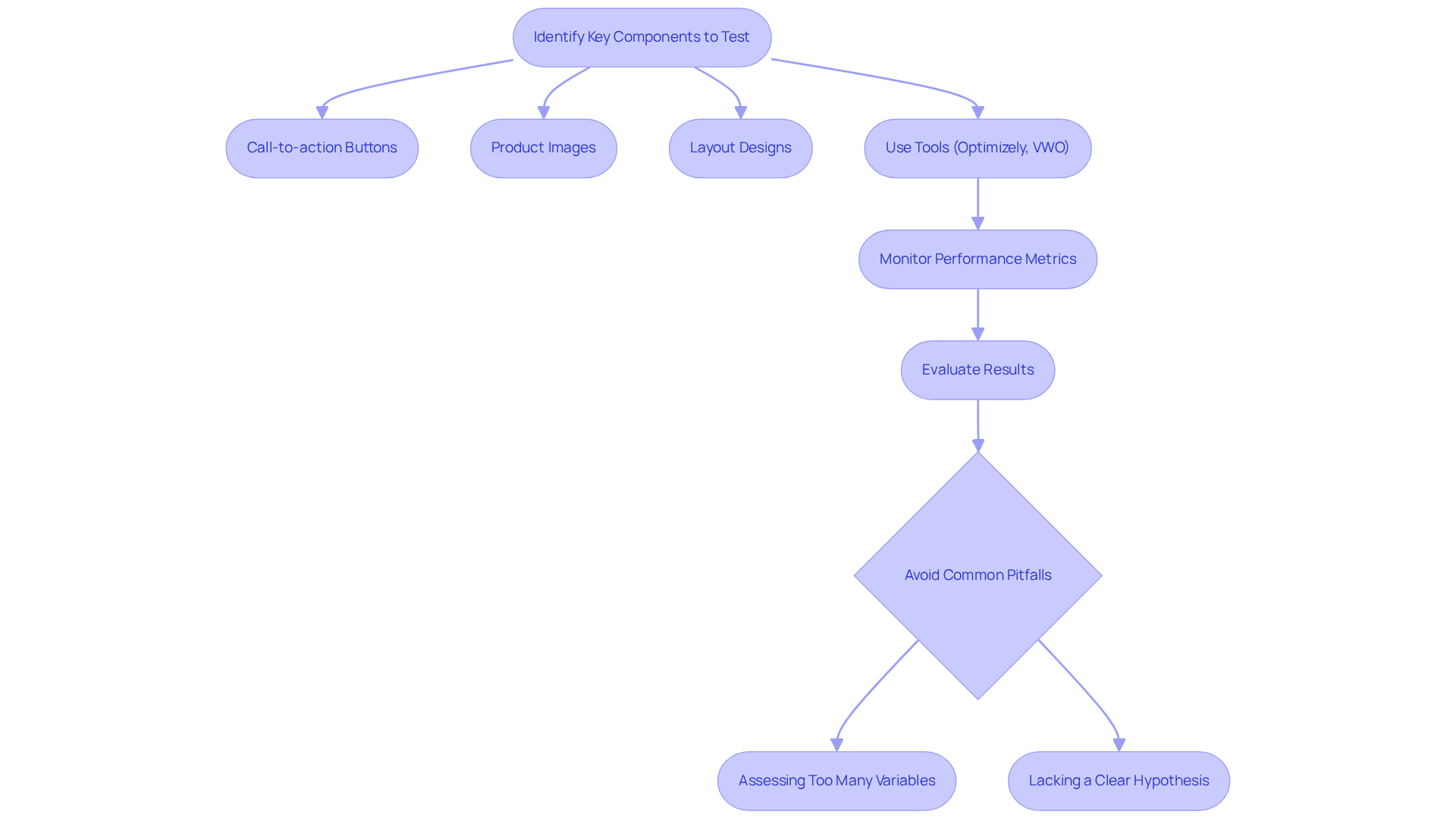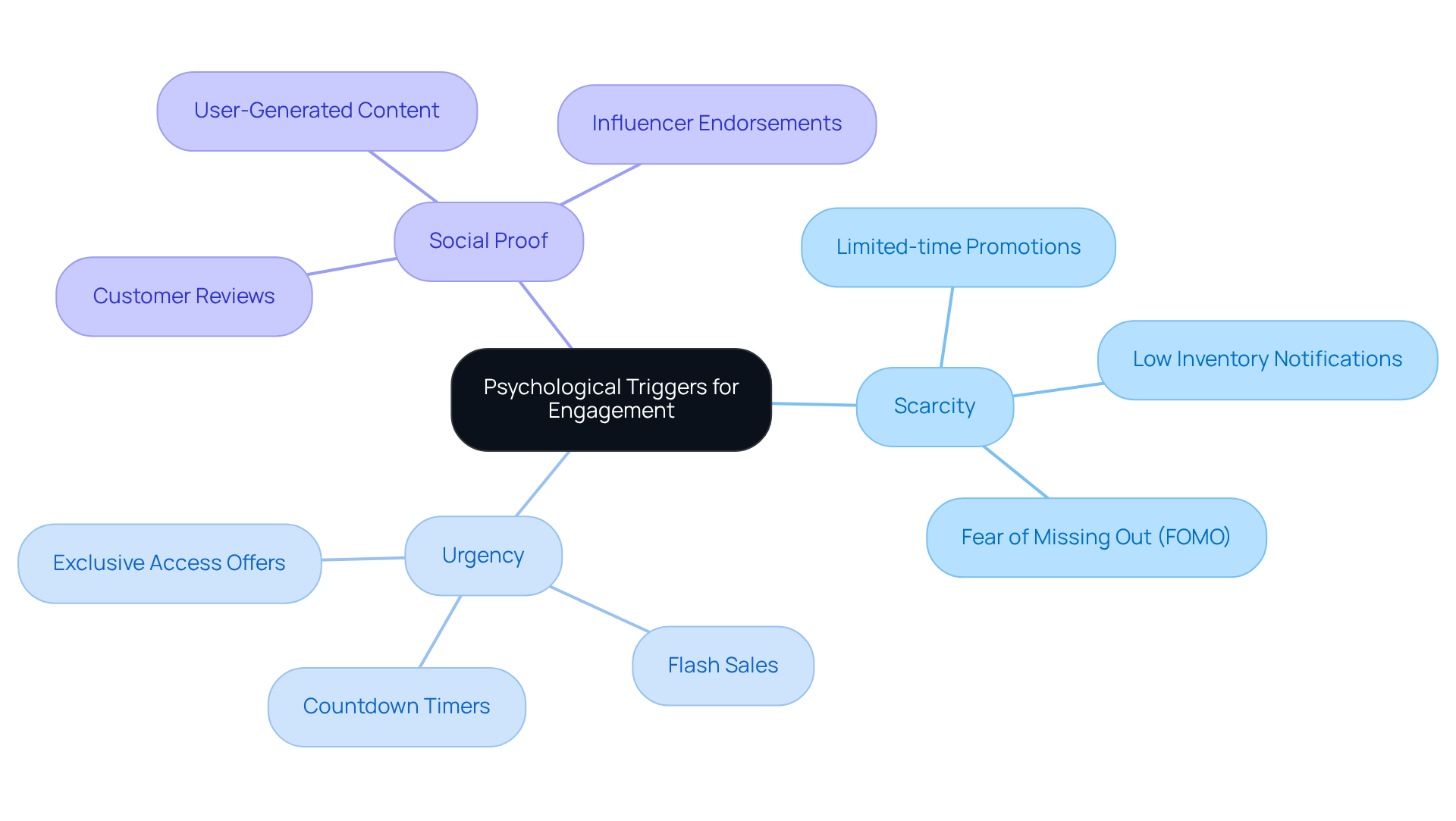
Overview
This article presents four effective strategies for e-commerce site design that focus on:
- User-centric UI/UX
- Data-driven insights
- Continuous A/B testing
- Incorporation of psychological triggers
Each strategy is underpinned by compelling statistics and pertinent examples, illustrating how prioritizing user experience and leveraging data can significantly enhance customer engagement, retention, and conversion rates. By implementing these strategies, e-commerce businesses can not only attract but also retain customers, ultimately driving higher conversion rates.
Introduction
Crafting a successful e-commerce site demands more than just appealing visuals; it requires a profound understanding of user behavior and preferences. In an era where online shopping increasingly dominates consumer habits, businesses confront the imperative challenge of developing engaging, user-friendly platforms that not only attract visitors but also convert them into loyal customers.
This article delves into four pivotal strategies that can revolutionize e-commerce site design:
- User-centric approaches
- Data-driven insights
- Continuous optimization through A/B testing
- Strategic application of psychological triggers
How can businesses harness these strategies to elevate user experience and drive sales in an ever-more competitive landscape?
Prioritize User-Centric UI/UX Design
To develop a client-focused UI/UX design, begin with comprehensive audience research to fully understand the needs and preferences of your target demographic. This foundational step is essential, as 88% of online consumers are .
Establish clear navigation routes to ensure individuals can effortlessly locate products and information; 94% of consumers highlight simple navigation as the most critical aspect of digital platforms. High-quality visuals and a consistent layout across pages not only improve usability but also build trust. In fact, 75% of individuals form opinions about a company’s credibility based on its website design.
Furthermore, it is imperative to emphasize mobile responsiveness; mobile devices account for 68.2% of web traffic, making it vital to enhance the shopping experience for mobile visitors. Successful brands like Amazon and Zappos exemplify user-centric designs that prioritize ease of use, resulting in heightened customer satisfaction and loyalty.
By focusing on these strategies, e-commerce site design can help e-commerce companies significantly improve customer engagement and retention.

Leverage Data-Driven Insights for Design Decisions
To harness the power of , it is imperative to utilize tools such as Google Analytics and heatmaps for monitoring interactions on your website. By analyzing key metrics—bounce rates, time on page, and conversion rates—you can pinpoint areas that require improvement.
For instance, if data reveals that customers frequently abandon their carts, it is crucial to scrutinize the checkout process for potential friction points. Implementing changes based on these insights, such as simplifying forms or providing guest checkout options, can significantly enhance the user experience in e commerce site design.
Brands that adopt a data-driven approach, exemplified by ASOS, have witnessed remarkable improvements in user engagement and sales through the continuous refinement of their e commerce site design based on user data.

Implement Continuous A/B Testing and Optimization
To execute A/B testing successfully, it is essential to identify key components to test, such as:
- Call-to-action buttons
- Product images
- Layout designs
Tools like Optimizely or VWO facilitate the creation of variations for your websites, directing traffic to each version for comparison. Monitoring performance metrics is crucial; it allows you to identify which version yields superior results. For instance, a retailer that tested two distinct product page layouts achieved an 8.6% increase in conversion rates, showcasing the power of data-driven decisions. Ongoing A/B experimentation empowers brands to adjust their websites according to user preferences and changing market trends, ultimately improving conversion rates. As David Ogilvy famously expressed, 'Never stop experimenting, and your advertising will never stop improving.'
Moreover, it is vital to be aware of common pitfalls in A/B experimentation, such as:
- Assessing too many variables simultaneously
- Lacking a clear hypothesis
to ensure effective implementation. Successful A/B testing has led to average of up to 8.6% for various retail brands, underscoring its potential impact on revenue growth.

Incorporate Psychological Triggers to Drive Engagement
Incorporating such as scarcity, urgency, and social proof into your e-commerce design is essential for driving conversions.
- Limited-time promotions and low inventory notifications generate a sense of urgency, compelling individuals to act swiftly.
- Furthermore, showcasing customer reviews and testimonials significantly enhances trust and credibility.
- For instance, brands like Booking.com effectively leverage these triggers by highlighting limited availability and user ratings, resulting in increased bookings.
By strategically applying these psychological principles, e-commerce sites can create a more persuasive shopping experience that not only captivates customers but also drives them to take action.

Conclusion
Prioritizing user-centric design is not merely beneficial; it is essential for crafting an effective e-commerce site that attracts visitors and encourages their return. By focusing on the needs and preferences of the target audience, businesses can significantly enhance user experience, leading to increased customer satisfaction and loyalty. This approach transcends trends; it is a fundamental strategy that can dramatically impact the success of an online store.
The article delineates four pivotal strategies that can revolutionize e-commerce design:
- Prioritizing user-centric UI/UX
- Leveraging data-driven insights
- Implementing continuous A/B testing
- Incorporating psychological triggers
Each of these elements is critical for optimizing the shopping experience. From ensuring seamless navigation and mobile responsiveness to utilizing analytics for informed design decisions and applying psychological principles to drive engagement, these strategies collectively enhance the customer journey and elevate conversion rates.
Ultimately, adopting these best practices is not just about keeping pace with trends; it is about fostering a deeper connection with customers. By embracing user-centric design, leveraging data, and continuously testing and optimizing, e-commerce businesses can create compelling online experiences that resonate with consumers. The significance of these strategies lies in their transformative potential, turning casual browsers into loyal customers and driving long-term growth and success in the competitive e-commerce landscape.
Frequently Asked Questions
What is the first step in developing a user-centric UI/UX design?
The first step is to conduct comprehensive audience research to understand the needs and preferences of your target demographic.
Why is audience research important for UI/UX design?
Audience research is essential because 88% of online consumers are less likely to return to a site after a poor experience.
What is a critical aspect of digital platforms according to consumers?
Simple navigation is highlighted as the most critical aspect, with 94% of consumers emphasizing its importance.
How does website design influence consumer perceptions of a company?
75% of individuals form opinions about a company’s credibility based on its website design.
Why is mobile responsiveness important in UI/UX design?
Mobile responsiveness is vital because mobile devices account for 68.2% of web traffic, making it essential to enhance the shopping experience for mobile visitors.
Can you provide examples of successful brands that prioritize user-centric design?
Successful brands like Amazon and Zappos exemplify user-centric designs that prioritize ease of use, resulting in heightened customer satisfaction and loyalty.
What overall impact can user-centric design have on e-commerce companies?
By focusing on user-centric design strategies, e-commerce companies can significantly improve customer engagement and retention.
FAQs











